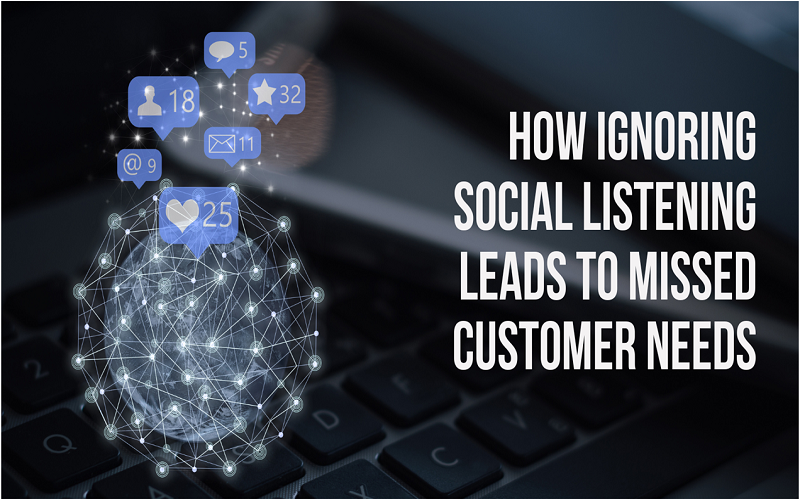
The goldmine for businesses is in this flood of data waiting to be uncovered. However, too many companies still give little heed to social media listening and rely on the old means of card comments, call centres, and email for customer feedback. Leaving this out means you’re missing a whole range of opportunities in how to know and satisfy your customer.
Incorporating social media listening into their strategies lets companies address customer pain points, as well as market alterations, on the front foot and thus enable a better journey/experience for your end-user. Social listening is not only a nice-to-have but in fact an essential core part of any new-age customer-friendly business approach.
The Value of Social Listening
Trends Anticipated but Never Realized
In the constantly changing digital space, trends can come and go in the blink of an eye. With the help of social listening, organizations can now keep pace with these trends by constantly monitoring ongoing social conversations.
If businesses fail to perform social listening, they are losing out on this informing data. This lack of insight leads to them ignoring developments in their customer base, the demands on their marketplace, or fresh ideas that could keep them ahead of competitors.
For example, a fashion retailer that does not listen to social media would have missed the increasing trend of sustainable materials in fabrics amongst eco-aware consumers.
Customer Displeasure
Customer satisfaction is the base of any successful company. When customer complaints and feedback are not solved immediately, the frustration only mounts.
24/7 social listening is needed to produce real-time responses and feedback from customers, which in turn will assist quickly identify issues for timely resolution. If a customer tweets about receiving a defective product or having a poor service experience and the company doesn’t respond, that one-time slippage will cost more than just losing business from that Twitter user. It may set off an entire chain of bad word-of-mouth publicity!
If businesses fail to actually address these needs, or even acknowledge that they should do something about them at all – then this can come off as a clear lack of care on behalf of the business and in turn attract customers away from you who are looking for an experience where their loyalty is not simply taken for granted.
Reputation Damage
Reputation management is more important than ever in the age of social media. If you ignore negative comments, your feet will be held to the fire till it matters and hits crisis level.
For instance, a restaurant receives no likes or shares for a viral food safety post and ends up damaging its reputation leading to a loss of customers and developers in terms of revenue. When you employ social listening, it enables businesses to recognise and address those unpleasant rumblings before they propagate too much, focusing on the brand as well as preserving customer faith.
If companies ignore social listening, it will limit the ability of the company to listen promptly, putting customer relationships and brand reputation on the line. Social listening has become a critical practice in the digital space and as is evident, for very good reason.
Social Listening Benefits
Proactive problem solving
Social listening allows companies to detect and address such issues before they can grow into more significant problems. Following up on social media conversations makes businesses aware of early signs of dissatisfaction, for example—when people start repeating the same complaints about a product or service. This real-time listening allows companies to intervene promptly, offering solutions and mitigating potential negative impacts.
For example, when many social media users start to report a software bug, a tech company will be able to respond in time with an appropriate patch or steps for troubleshooting, which will, therefore, help prevent mass frustration and stop a loss of customer satisfaction.
Customer Interaction
Customer engagement with direct involvement is a strategy for making connections, building relationships, and establishing brand loyalty. Social listening, therefore, provides an avenue for businesses to engage customers directly on a platform they are already conversant with.
The company will respond, thank for the positive reviews, or satisfy concerns expressed by customers in such a regard to show appreciation or concern in improving their experience. This active engagement does not only solve isolated problems, but it helps to build a community and create linkages among the customers who become brand advocates endorsing the company to their network.
Market Research
When you understand what your customers are like and how they prefer to use it, it helps establish a base when designing products and marketing strategies that appeal to these particular markets.
Collecting customer data, which is a priceless information repository on how customers perceive and experience brands (what resonates with them genuinely or alienates them; what are the areas where expectations have hardened over time). By analysing these conversations, we can identify trends and preferences but also unmet needs that would go unnoticed in a run-of-the-mill market research procedure.
For example, a food and beverage company can understand the elevation of interest in plant-based trends by analysing words from data and/or hashtags collected, hence supporting to launch new innovations. These can be used to inform product development, as well as tie in directly with downstream marketing campaigns aimed at customer interest and motivation.
Tracking the right metrics is key to getting the most out of social listening. Understanding these key performance indicators and what they mean can help you improve your affiliate marketing strategies in 2021.
Implementing Social Listening in Your Strategy
- Define what you want to achieve with social listening, whether it is an improvement in customer service, tracking of brand sentiment, or identification of market trends.
- Make sure you take a comprehensive view by monitoring various social media platforms, forums, blogs, and review sites.
- Social media trends and conversations change quickly. Review and continually update your keywords, hashtags, and topics accordingly.
- Data can be collected, but what comes next? Be sure to have processes for the data to be analysed and take actionable steps from the gathered insights.
- Observe what is being done on social media by your competitors to understand where the opportunities and threats in your market lie.
- The insights from social listening should be shared with departments so that it can maximise the benefits
- Give your customer service team on-the-ground feedback to solve issues on the spot and boost overall customer satisfaction.
- Share with the product development team any insights about new features or product improvements that can be made to meet the needs and preferences of customers better.
- Make sales representatives more in tune with customer pain points using social listening insights.
- Ensure that all of the insights generated by social listening reach the level of the top leadership team to decide on key strategic moves.
Social listening metrics that marketers must track
Volume of Mentions
What to Monitor: Track the mentions of your brand, keywords, or products across your social media-owned channels as well as competition.
Why It Is Important: To understand the volume of conversation around you. A lot of mentions = people know your brand -> sudden growth can mean something big is happening, good or bad!
Sentiment Analysis
What to Follow: General sentiment behind the mentions – positive, negative, or neutral.
So What: This indicates how your brand lands in the market. Positive mentions often mean happy customers, while negative mentions highlight areas where you need to work.
Share of Voice
Metric: Share of Voice (SoV)
What it is: % total industry conversation about your brand vs. that around competitors.
Why it Matters: This tells you how much buzz there is surrounding your name compared to others in that industry. A higher share means you are more influential and visible. A smart CX tool would include both influencer and competition share of voice to show the complete buzz generated around your competing businesses.
Top Influencers
What must be done: Include the accounts or people who talk about your brand.
What You Can Do About It: Understanding who these influencers are is helpful for reaching out to them and spreading the word about your brand even more widely. Influencers can increase brand credibility and reach.
Reach and Impressions
Metrics to Track: Reach – How many unique users saw your content? The total number of times the content was shown.
Why This is Important: This tells you how much your content has been shared across networks. High reach and impressions mean your content is reaching many users, creating more pathways for people to become aware of the brand.
Engagement Metrics
What: Engagements (likes, comments, shares for Instagram, FB & LinkedIn) and Retweets.
So What: These engagements mean that other users are interacting with the content you’re sharing. The more engagement, the better your content is in tune with what matters to people, and this kind of relationship-building fosters loyalty.
Trending Topics and Hashtags
What You Can Monitor: Hashtags that resonate with your brand and the product/service category.
Why It Matters: Staying on top of trends and hashtags gives you insight into what your audience values. You can join these conversations to provide improved insight and gain more visibility.
Challenges and Customer Feedback
What to track: Problems that customers often talk about. Common questions customers ask. The feedback that keeps coming up. A smart ORM tool can segregate mentions as actionable and non-actionable as well as assign those incoming tickets to the right agent to work on.
Why It Is Relevant: This helps you understand what customers like and dislike. Recognizing and resolving issues leads to increased customer satisfaction and loyalty.
Brand Advocates and Detractors
Who to Keep an Eye On Frequent praisers (advocates) and critics (detractors) of your brand.
The Why: Communicating with fans increases the likelihood of support and positive word-of-mouth. Responding to naysayers might give you the upper hand in your reputation and help recoup a bad situation.
Role of AI in Enhancing Social Listening Capabilities
Artificial Intelligence (AI) is revolutionising how businesses undertake social listening, making the process more efficient and more profound.
AI-driven sentiment analysis goes beyond keyword tracking to capture the subtlety of customer emotions. So when the sessions and comments are collected, AI can distinguish better whether sentiment is positive, negative, or neutral. This will help businesses understand the feelings of customers and be able to react properly.
Artificial intelligence systems can monitor vast volumes of social media data at any given time, giving companies real-time alerts on significant shifts in brand sentiment or emerging topics. This allows businesses to respond quickly to possible crises, capitalize on hot topics, and outperform the competition in terms of agility.
AI uses historical data and machine learning algorithms to forecast future trends and consumer behaviours. It predicts changes in customer preferences and market dynamics by finding patterns and correlations, thus helping businesses make proactive adjustments to their strategies.
Manual social listening may be prone to error and bias. The AI reduces such issues with the help of uniform and unbiased analyses of large data sets. Natural Language Processing (NLP) and machine learning algorithms ensure that the analysis is accurate, reliable, and free from human error.
AI can help streamline the reporting process by generating comprehensive reports on social media activity, trends of sentiment, or customer insights. Scheduled and custom reports may also be sent to constantly update a business without human intervention.
Final Thoughts
Integrating social media listening into your strategy, requires you to choose the appropriate social listening tool, comply with best practices, align social data with business goals and objectives and collaborate insights throughout all departments. This ensures that companies can listen closely and respond quickly and helps in making an attempt to go ahead of your competition in the online market before things become a bigger problem —resulting in positive outcomes all around for both new user growth as well as long-term customer satisfaction.




